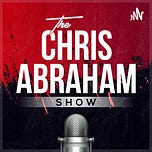In “Will We Tolerate Concentration Camps and Slave Labor?” Steven Beschloss warns his readers that America stands at the edge of a moral abyss: the mass detention of migrants, the forced separation of children, the specter of bonded labor feeding the same fields that will starve without it. He is right to be horrified. He is not wrong to sound the alarm.
But if Beschloss’s fear is that these horrors might happen, ours must be the colder recognition that they already do. What is described as a new cruelty — the camp, the cage, the coerced hand in the field — is not the Trump regime’s innovation. It is the republic’s inheritance. It is the root that has never been cut away.
I. The Debt Chain Was Never Broken
Long before there were border walls or detention quotas, there was the debt. The same debt that once bound the sharecropper to the planter now binds the migrant to the coyote, the cartel, the labor broker who holds a family hostage five hundred miles away. This is not a metaphor. It is the ledger that drives the invisible economy, the unfree hand that picks the fruit, that kills the chicken, that cleans the hotel toilet so cheaply you do not ask what it costs.
If there are “concentration camps” now, they exist to manage the surplus. The threat of removal is what keeps the labor docile. The debt is what keeps it cheap. The same system once used the auction block. Today it uses a border checkpoint. The logic is unchanged.
II. The Good Master’s Paradox
Beschloss writes of “decent Americans” — a presumed moral majority who will rise up, sign petitions, boycott corporations, refuse to benefit from forced labor. But this moral majority is the same quiet multitude that eats because the fields are filled by the unpaid, the underpaid, the never-to-be-legal. It is the same moral majority that cries out when children are in cages — but never asks why a father, separated, must work twice as long for half the wage so that the cage remains an exception, not the rule.
The plantation never burned. It was renamed. Its fences are the line between the undocumented and the documented, between the detainee and the detainee’s children who still need to eat. The “good master” protests the lash but never the harvest.
III. The Labor Shortage Is a Confession
Beschloss warns that the forced deportation of millions will create a “serious labor shortage” — that without these bodies, crops will rot, businesses will shutter. This is the quiet part spoken aloud:
“Without our illegals, we have no slaves. Without our slaves, the economy we cherish does not function.”
This is not a political slander. It is the fact beneath the field. The plantation owners of the Old South were more honest: they knew they could not pay free men what they owed. They said so. We say the same, but call it compassion.
We say we must “reform the system” — but never in a way that severs the overseer’s chain of debt and fear.
IV. The Cage You Cannot See
The “kids in cages” — the image that ignites your moral panic — is only the visible face of an architecture that cages entire families in a permanent shadow. Every day, a mother in debt bondage stands in a strawberry row while her child waits to see if the coyote’s threats are real. Every day, a father stays silent about broken machines, unpaid wages, unsafe conditions — because to speak is to lose the family’s foothold entirely. The legal cage is the one you do not photograph.
This is not the accidental cruelty of a single regime. It is the constant, necessary cruelty of a system that depends on people too terrified to ask for what they are owed.
V. What Freedom Would Really Cost
So we sign pledges: we will not buy from the company that exploits the detained. But we will buy from the company that exploits the invisible. The debt slave in the orchard. The bonded day laborer on the construction site. The unpaid girl in the restaurant basement who owes her coyote more than her life is worth.
If we truly meant freedom — freedom from fear, freedom from debt, freedom from the overseer’s ledger — it would mean paying the full price for the fruit, the roof, the meal. It would mean status, bargaining power, legal wages that reflect the real value of the work. It would mean dismantling not just the cage you can see, but the chain you choose not to.
VI. America, America — Tell the Truth
Beschloss asks: Will we tolerate concentration camps and slave labor?
You already do.
You always have.
Your panic is not that it might come. Your panic is that it might be named for what it is — and that you might be forced to see your share in its harvest.
Say you will not pay. Say you prefer your fruit cheap. Say you prefer your moral outrage neat and contained, not stained by the cost of your abundance.
America, America — you do not fear the camps. You fear the freedom that would cost you what you are unwilling to give.
📚 Appendix: The Debt Chain Never Broke
I. Historical Timeline: Camps, Coercion & Labor Exploitation in America
1619–1865: Chattel Slavery
12.5 million Africans transported by force; ~400,000 to North America.
The economy of the South depended on free labor for cotton, tobacco, sugar — raw exports that fueled Northern industry and global trade.
1865–1877: Reconstruction & the 13th Amendment Loophole
Slavery abolished, except as punishment for crime: the birth of convict leasing.
Black Codes criminalized “vagrancy” and petty theft to re-enslave newly freed Black people.
By 1890, 90% of Alabama’s convict lease population was Black.
1870s–1940s: Peonage & Sharecropping
Black and poor white sharecroppers bound to landowners by debts they could never repay — often enforced by violence and local courts.
Peonage technically outlawed (Peonage Act of 1867) but persisted into the 20th century.
1942–1964: Bracero Program
WWII farm labor shortages lead to mass “guest worker” imports from Mexico — legally contracted but underpaid, threatened with deportation.
4.6 million Bracero contracts signed; conditions often brutal.
1980s–Today: Mass Incarceration & Prison Labor
US prison population explodes (from ~500,000 in 1980 to over 2 million by 2020).
Prison industries thrive: license plates, furniture, call centers, agriculture.
Incarcerated people earn pennies per hour; refusal to work often punished.
1996–Today: Migrant Debt Chains & Border Detention
NAFTA displaces millions of rural farmers in Mexico, pushing many northward.
Coyotes and cartels emerge as smuggling syndicates — migrants arrive indebted, paying off smuggling fees under threat.
2000s: Obama’s record deportations (~3 million) build detention infrastructure Trump expands.
2025: Beschloss calls it “new,” but it’s the same scaffold — only scaled and branded.
II. Counter-Analysis: What This Piece Corrects
✔️ Not “New Camps” — Old Camps, New Branding
ICE detention exploded post-9/11.
Obama expanded family detention at places like Dilley and Karnes, with chain-link cages to “temporarily” separate families.
✔️ Family Separation Is Systemic, Not Unique
100,000+ children separated every year by domestic criminal system, not just immigration.
Probation, parole, or jail for a parent = the same practical result: the child goes elsewhere.
✔️ Slave Labor Is Already Legal, Not Hypothetical
The 13th Amendment exception fuels $1 billion+ in prison industries.
Migrant workers in debt bondage already pick produce, slaughter livestock, and build homes — their “illegality” suppresses wages.
✔️ Labor Shortage = Economic Confession
USDA: 50–70% of US farmworkers are undocumented.
Removing them would collapse sectors worth hundreds of billions.
The Southern plantation owners said the same: “Emancipation will destroy us.”
It did — if your measure was cheap cotton.
III. Hard Stats: Useful Anchors
Estimated undocumented US population: ~10–11 million
% of US agricultural labor undocumented: ~50% (USDA)
Average farmworker pay (undocumented): $15–20K/year, often below minimum wage when off the books.
US prison labor pay: Average $0.52/hour; some states as low as $0.02/hour.
Annual US agricultural exports: ~$150 billion — heavily reliant on cheap labor.
Obama deportations: ~3 million total (highest modern figure).
13th Amendment ratified: December 6, 1865 — with the forced labor loophole.
Last known peonage prosecutions: as late as the 1940s in some Southern states.
IV. FAQ
Q1: “Are ICE detention centers really concentration camps?”
A: Technically no — they are detention facilities built on civil immigration violations. But their scale, extrajudicial nature, and potential for forced labor echo systems of mass internment. Japanese internment (120,000 people, WWII) is a closer precedent.
Q2: “Did Democrats do this too?”
A: Yes. The same detention architecture expanded dramatically under Bush and Obama. “Kids in cages” photos widely shared in 2018 were taken in 2014.
Q3: “Is debt bondage really slavery?”
A: The UN, ILO, and every major anti-trafficking NGO classify it as modern slavery — workers do not have meaningful freedom to leave. It is the most common form worldwide.
Q4: “Why don’t Americans take these jobs?”
A: They sometimes do — but not at the same wages and under the same threats. Legal status brings bargaining power. That’s the “labor shortage” fear.
Q5: “Would fair wages fix it?”
A: Partly. But fair wages mean higher prices — and the people protesting the cruelty often do not want to pay them. That’s the plantation paradox.
V. Glossary
Debt Bondage / Peonage: When a worker is forced to work indefinitely to pay off a debt — often manipulated so the debt never ends.
Convict Leasing: A post–Civil War system where states leased out prisoners to private companies, creating conditions worse than slavery for many.
Bracero Program: The largest guest worker scheme in US history (1942–1964), legal but rife with wage theft and abuse.
13th Amendment Exception Clause: “…except as a punishment for crime…” — the legal root of prison labor.
Coyote: A smuggler who facilitates illegal border crossings — often entangling migrants in large debts.
Overseer’s Ledger: A term for the way debt and threats replace physical whips; the economic structure remains bonded.
VI. Final Words
It is right to be outraged.
It is right to protest cages.
It is right to call forced labor what it is.
But it is false to pretend that the moral crisis is new, or accidental, or unique to a single administration. The debt chain never broke. The overseer never left. The plantation never burned.
So ask not only who built the fence, but who profits from the labor behind it — and whether you will pay the price of tearing it down.
America, America — you have always needed your slaves.
tl;dr
The provided text argues that what is often perceived as new cruelties, such as migrant detention and forced labor, are not recent innovations but rather a continuation of America's historical reliance on exploitative labor systems. It traces a "debt chain" from chattel slavery and sharecropping to modern migrant debt bondage and prison labor, asserting that the underlying logic of cheap, coerced labor has remained consistent, merely evolving in its methods and visibility. The author posits that the public's "moral panic" over issues like "kids in cages" often ignores the deeper, systemic dependence on these unfree labor forces that underpin various sectors of the economy. Ultimately, the piece challenges readers to recognize their complicity in a system that prioritizes cheap goods over genuine freedom and fair wages, suggesting that true change would necessitate a significant economic and moral reckoning.













Share this post